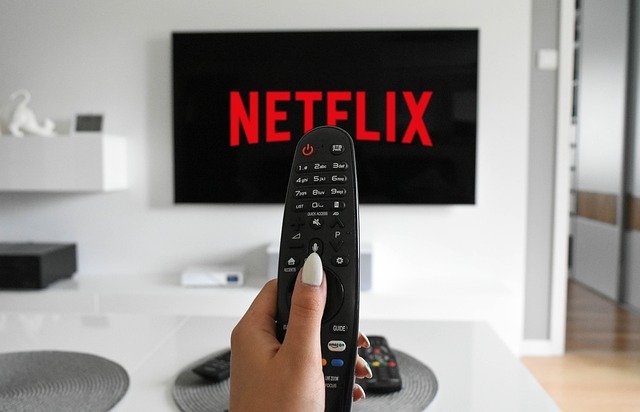Live TV Streaming Platforms in the U.S.: Prices, Features, and Popular Choices
The landscape of television viewing in the United States has undergone a significant transformation with the rise of live TV streaming platforms. These services offer viewers the flexibility to watch their favorite channels and programs without the need for traditional cable or satellite subscriptions. As cord-cutting continues to gain popularity, understanding the various options, features, and pricing structures of live TV streaming services becomes increasingly important for consumers looking to make informed decisions about their entertainment choices.

What Are Live TV Streaming Platforms?
Live TV streaming platforms are online services that provide access to live television channels over the internet. Unlike on-demand streaming services such as Netflix or Hulu’s basic plan, these platforms offer real-time broadcasts of network and cable channels. Users can watch content on various devices, including smart TVs, smartphones, tablets, and streaming devices like Roku or Amazon Fire TV Stick. These services typically require a stable internet connection and a compatible device to stream content.
Key Features U.S. Viewers Look For in Streaming Platforms
When choosing a live TV streaming service, U.S. viewers often prioritize certain features that enhance their viewing experience. One of the most sought-after features is a robust channel lineup that includes local networks, popular cable channels, and sports networks. Many viewers also value the ability to record live TV through cloud DVR services, allowing them to watch their favorite shows at their convenience.
Another important feature is the number of simultaneous streams allowed per account. This is particularly crucial for households with multiple viewers who may want to watch different content at the same time. Additionally, the availability of on-demand content, the quality of the streaming (HD or 4K), and the user interface’s ease of use are factors that viewers consider when selecting a platform.
Popular Live TV Streaming Platforms in the U.S. (2025)
As of 2025, several live TV streaming platforms have established themselves as popular choices among U.S. consumers. While the market continues to evolve, some of the well-known services include YouTube TV, Hulu + Live TV, Sling TV, and fuboTV. Each of these platforms offers a unique combination of channels, features, and pricing options to cater to different viewer preferences.
YouTube TV has gained a reputation for its extensive channel lineup and unlimited cloud DVR storage. Hulu + Live TV combines live television with a vast library of on-demand content, making it an attractive option for those who enjoy both live and recorded programming. Sling TV offers more flexibility with its a la carte approach to channel selection, allowing users to customize their package. FuboTV has positioned itself as a sports-centric option, offering a wide array of sports channels alongside general entertainment options.
Average Prices of Live TV Streaming Services in the U.S.
The cost of live TV streaming services can vary significantly based on the package and features selected. As of 2025, the average price range for base packages of major live TV streaming services in the U.S. typically falls between $40 and $70 per month. However, it’s important to note that prices can change, and many services offer tiered packages with different channel lineups and features at various price points.
| Service | Base Package Price (Monthly) | Notable Features |
|---|---|---|
| YouTube TV | $64.99 | Unlimited cloud DVR, 3 simultaneous streams |
| Hulu + Live TV | $69.99 | Includes Hulu streaming library, Disney+, and ESPN+ |
| Sling TV | $35 (Orange or Blue) | Flexible channel packages |
| fuboTV | $64.99 | Sports-focused, 4K streaming on select content |
Prices, rates, or cost estimates mentioned in this article are based on the latest available information but may change over time. Independent research is advised before making financial decisions.
When choosing the right platform for your household, consider factors such as the number of channels offered, the specific channels included (especially if you have must-have networks), the number of simultaneous streams allowed, and any additional features like cloud DVR capacity. It’s also wise to take advantage of free trials, which many services offer, to test the user experience and channel offerings before committing to a subscription.
Bundles and Add-Ons: Streaming + Internet in the U.S.
To provide more value to consumers, many internet service providers (ISPs) in the U.S. have begun offering bundles that combine high-speed internet with live TV streaming subscriptions. These packages can sometimes offer cost savings compared to purchasing internet and streaming services separately. Additionally, some streaming platforms provide add-on options for premium channels, expanded sports packages, or increased cloud DVR storage, allowing users to customize their experience further.
When considering these bundles, it’s crucial to compare the total cost against standalone services and ensure that the internet speeds offered are sufficient for smooth streaming, especially if multiple devices will be streaming simultaneously in your household. Keep in mind that while bundles can offer convenience, they may also come with longer commitment periods or additional terms and conditions.
In conclusion, live TV streaming platforms have become a viable alternative to traditional cable and satellite services for many U.S. viewers. By offering flexibility, customization, and often more competitive pricing, these services cater to the evolving needs of modern consumers. As the market continues to develop, viewers can expect ongoing innovations in features, content offerings, and pricing models, making it essential to periodically reassess options to ensure they’re getting the best value for their entertainment dollars.




